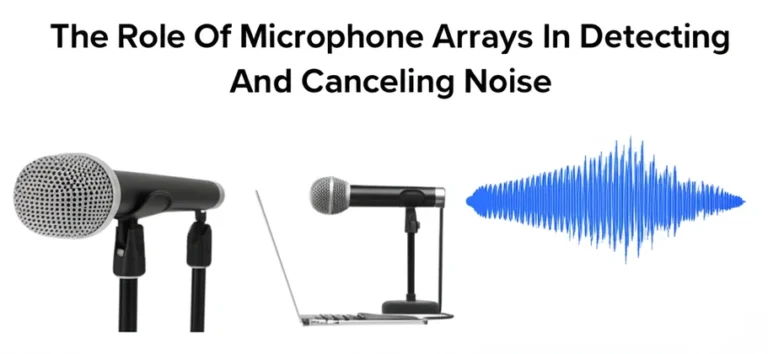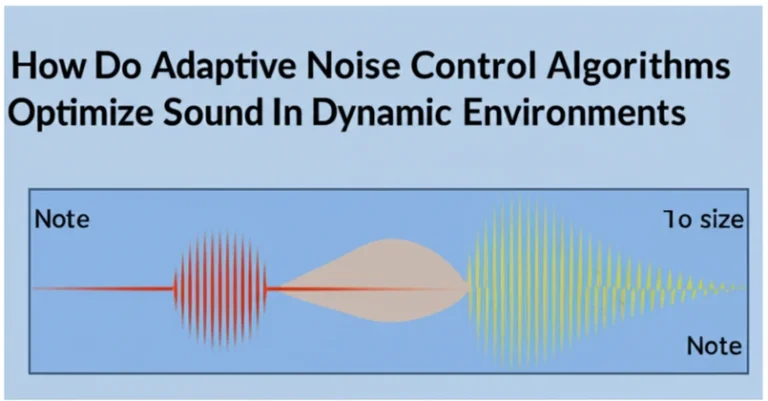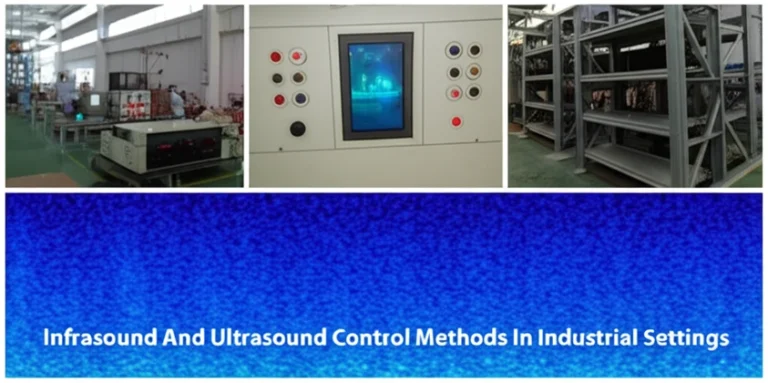
In today’s increasingly noisy world, unwanted sounds can be a significant source of distraction, impacting our concentration, reducing audio quality, and diminishing our overall experiences. How electronic noise cancellation enhances your sound experience is a question many are asking, as this technology offers an effective solution to combat this pervasive issue. Electronic noise cancellation (ENC) creates a clearer and quieter sound environment, allowing us to fully immerse ourselves in our audio content or find moments of peace in the midst of chaos.
This article delves into the science behind how electronic noise cancellation works, exploring its core technologies and diverse practical applications in both personal and professional settings.
From noise-canceling headphones to advanced systems integrated into vehicles and industrial machinery, ENC is revolutionizing how we interact with sound. By understanding the principles and benefits of ENC, you can make informed decisions about integrating this technology into your life.
What Is Electronic Noise Cancellation?
Electronic noise cancellation utilizes advanced technology to reduce or eliminate unwanted ambient sounds. It involves a sophisticated interplay of microphones, signal processors, and speakers working in concert to counteract noise in real-time, thereby enhancing audio clarity and overall listening comfort.
How electronic noise cancellation enhances your sound experience is through this active process of identifying and neutralizing disruptive sounds.
Active Noise Cancellation (ANC)
Active Noise Cancellation is the most prevalent form of ENC. It operates on the principle of destructive interference, utilizing sound waves to counter unwanted noise. The process involves three key steps:
- Detecting Noise: Strategically placed microphones capture external sound waves, identifying the noise to be neutralized.
- Processing Sound: Sophisticated signal processors analyze the captured noise patterns, determining their frequency, amplitude, and other characteristics.
They then generate an “anti-noise” signal—a sound wave with the same amplitude but inverted phase.
- Neutralizing Noise: Speakers emit the anti-noise signal. When the original noise and the anti-noise signal meet, they interfere destructively, effectively canceling each other out and reducing the perceived sound level.
ANC is particularly effective against consistent, low-frequency noises such as engine hums, the drone of airplane engines, and the constant hum of air conditioning systems. However, it’s less effective against sudden, high-frequency sounds like a dog barking or a door slamming.
Passive Noise Cancellation
Passive Noise Cancellation, frequently used in conjunction with ANC, relies on physical barriers to block sound.
This involves the use of materials like foam padding, dense insulation, and specialized earcup designs. While passive noise cancellation can be effective for attenuating higher-frequency noises, it lacks the adaptability and targeted noise reduction capabilities of active systems. It simply absorbs or reflects sound waves, reducing their energy before they reach the ear.
Core Technologies Behind Electronic Noise Cancellation
Microphones
Microphones are the frontline sensors in noise cancellation systems.
Their strategic placement is crucial for capturing a comprehensive sound profile of the surrounding environment. These microphones are designed to accurately detect and transmit ambient noise signals to the signal processor for analysis.
Signal Processors
Signal processors are the “brains” of noise cancellation systems. They employ complex algorithms to analyze the incoming noise signals from the microphones.
These algorithms identify the noise patterns, calculate the required anti-noise signal, and instruct the speakers to emit the counteracting sound waves.
Speakers
Speakers in ENC devices play a dual role. They deliver the desired audio content (music, voice calls, etc.) and simultaneously emit the anti-noise signal generated by the processor. The precise timing and amplitude of the anti-noise signal are critical for effective noise cancellation.
Applications of Electronic Noise Cancellation
Consumer Electronics
Noise-Canceling Headphones
Noise-canceling headphones offer an enhanced listening experience for music, calls, and gaming by minimizing background distractions.
Popular examples include the Bose QuietComfort series and the Sony WH-1000XM series.
Smart Home Devices
Smart home devices, such as Amazon Echo devices with adaptive noise cancellation, utilize ENC to reduce background noise during voice assistant interactions, ensuring clear communication even in noisy environments.
Automotive Industry
Cabin Noise Reduction
Advanced ANC systems in luxury vehicles create a quieter and more comfortable environment for passengers by minimizing engine and road noise. This allows for clearer conversations and a more relaxing driving experience.
Aviation and Transportation
Pilot and Passenger Headsets
Headsets like the Bose A20 Aviation Headset utilize ENC to reduce engine noise, allowing for clearer communication and enhanced comfort during flights. This is critical for pilots and passengers alike.
Industrial Applications
Machinery Noise Management
ENC-enabled hearing protection gear safeguards workers from harmful noise levels in factories and other industrial settings, helping to prevent hearing damage over time.
Benefits of Electronic Noise Cancellation
Improved Audio Quality
By eliminating disruptive background noise, ENC enhances sound clarity, allowing you to fully appreciate the nuances and details of your audio content.
This is particularly beneficial for enjoying music, podcasts, and audiobooks.
Enhanced Focus
ENC helps users concentrate in noisy environments like offices, cafes, or during commutes, promoting productivity and reducing distractions. This allows for greater focus on tasks, studies, or simply enjoying a moment of peace.
Hearing Protection
By reducing exposure to harmful noise levels, especially in industrial settings or during prolonged exposure to loud sounds, ENC contributes to hearing protection and prevents potential long-term hearing damage.
Innovations in Electronic Noise Cancellation
Adaptive Noise Cancellation
Adaptive noise cancellation systems, like those found in Apple’s AirPods Pro, dynamically adjust noise cancellation levels in real-time based on the surrounding environment. This allows for optimal noise reduction in various situations.
Hybrid Systems
Hybrid ANC systems combine feedforward and feedback ANC approaches, utilizing multiple microphones and advanced algorithms to achieve broader and more effective noise reduction across a wider range of frequencies.
These systems are commonly found in premium headphones.
AI Integration
AI-driven noise cancellation utilizes machine learning to predict and cancel noise more effectively, adapting to complex and dynamic sound environments. This technology is being implemented in video conferencing tools and other applications.
FAQ
What types of noise does electronic noise cancellation handle best?
ENC is most effective against consistent, low-frequency noises like engine hums, airplane noise, and the drone of air conditioning systems. It’s less effective against sudden, high-pitched sounds like a dog barking or a baby crying.
However, advancements in hybrid ANC and AI-powered noise cancellation are improving performance across a wider range of frequencies.
Can noise cancellation damage hearing?
No, ENC itself does not damage hearing. In fact, it often protects hearing by reducing exposure to harmful noise levels. However, listening to audio at excessively high volumes, even with noise cancellation, can still contribute to hearing damage.
Is ANC better than passive noise cancellation?
ANC and passive noise cancellation each have their strengths.
ANC is more effective for consistent, low-frequency noise, while passive methods excel at blocking high-frequency sounds. Many modern devices effectively combine both technologies for optimal noise reduction across a broader spectrum.
Do all devices with ENC offer the same performance?
No, ENC performance varies significantly between devices. Factors like microphone quality, processor speed, algorithm sophistication, and implementation all play a role in determining the effectiveness of a particular noise cancellation system.
Conclusion
Electronic noise cancellation is a transformative technology that significantly enhances our sound experiences and protects against the detrimental effects of unwanted noise.
By actively counteracting ambient sounds, ENC creates quieter, more focused environments, allowing us to fully immerse ourselves in our audio content, improve concentration, and protect our hearing. From personal headphones to sophisticated applications in the automotive and aviation industries, ENC continues to evolve, offering innovative solutions for a quieter, more productive, and more enjoyable world. As technology advances, how electronic noise cancellation enhances your sound experience will only continue to improve, offering even greater benefits in the years to come.






